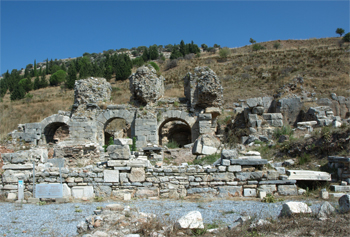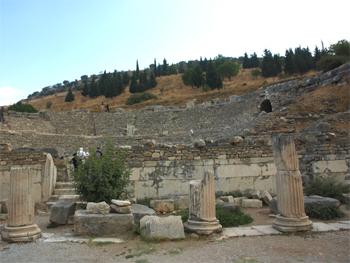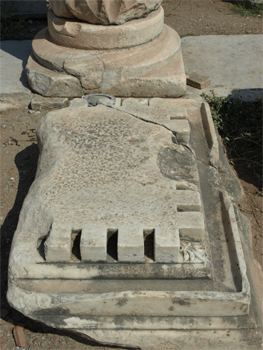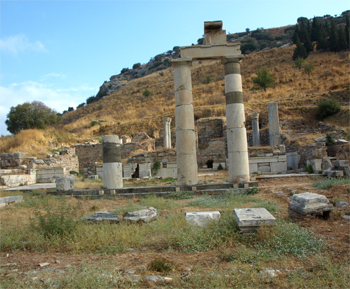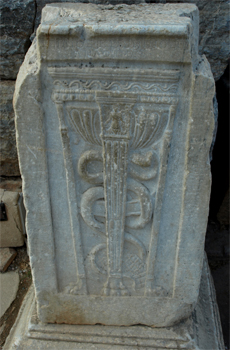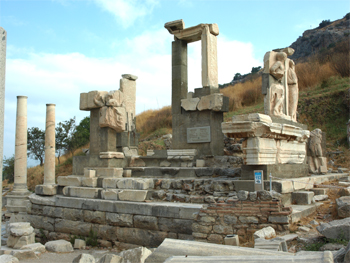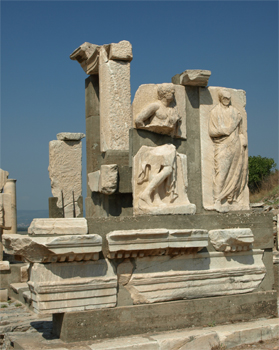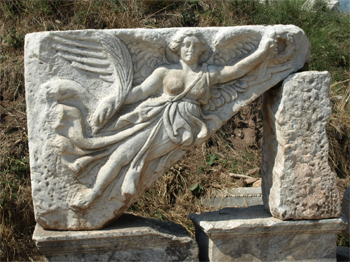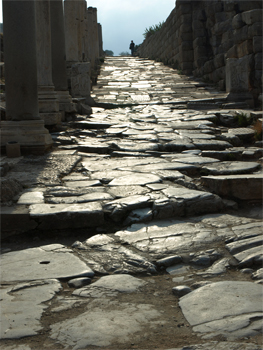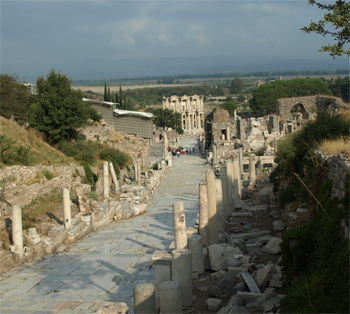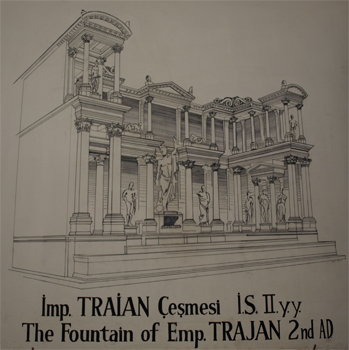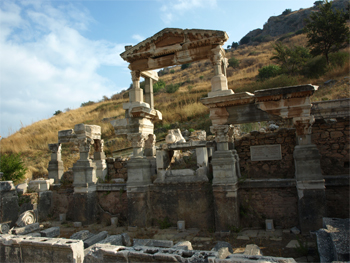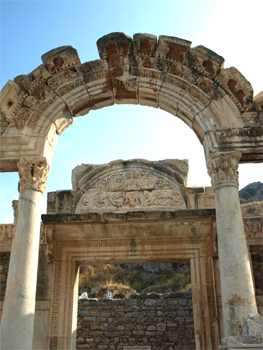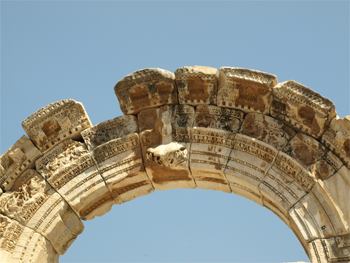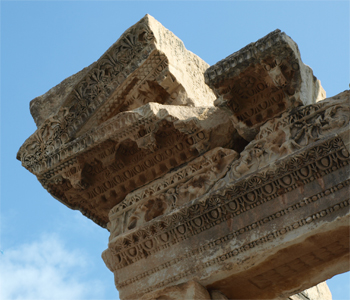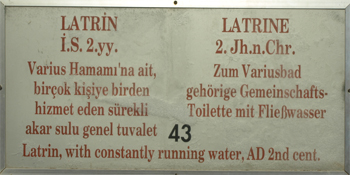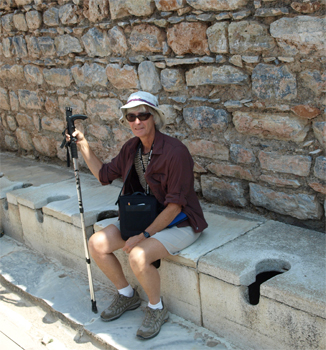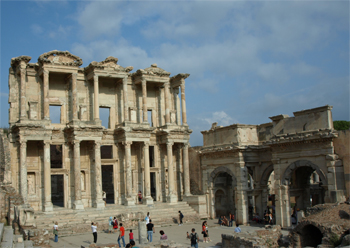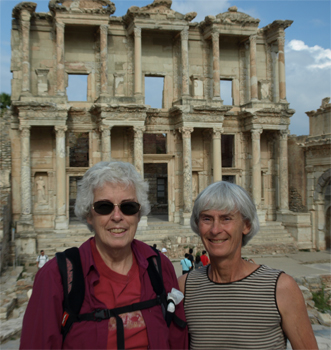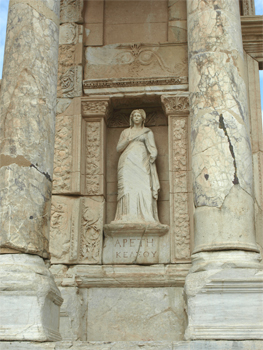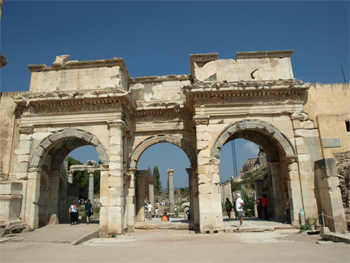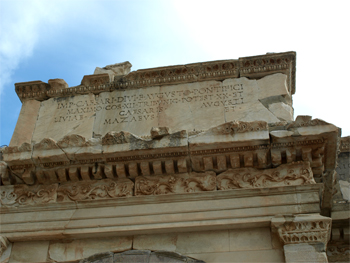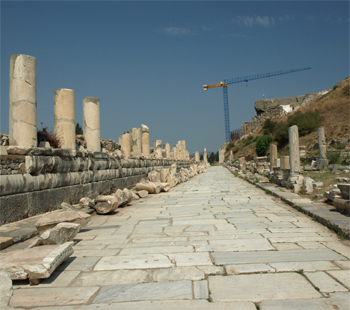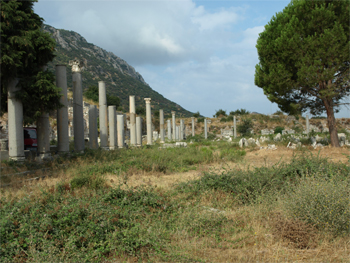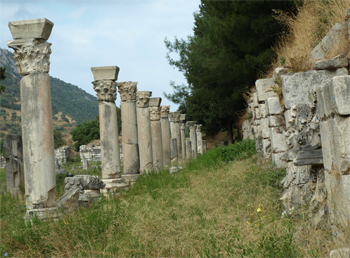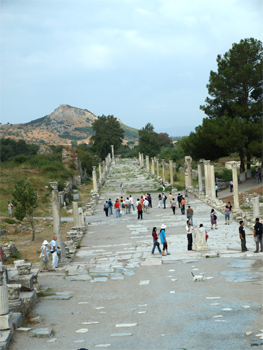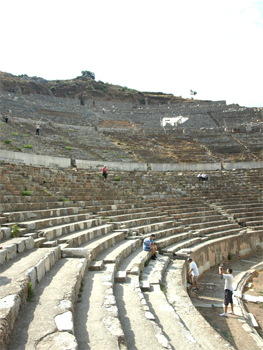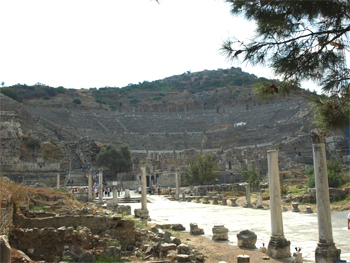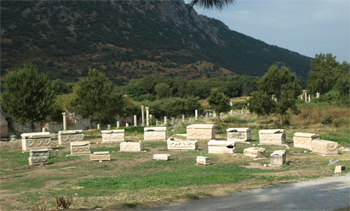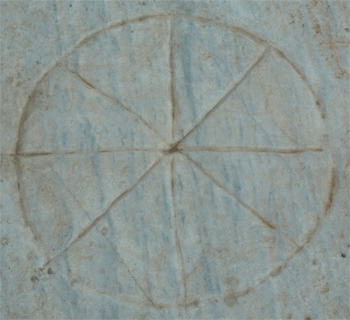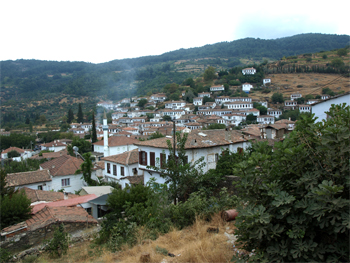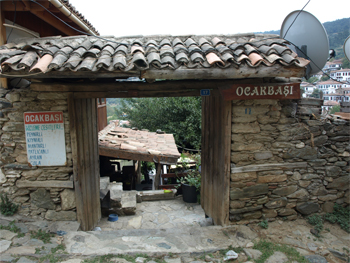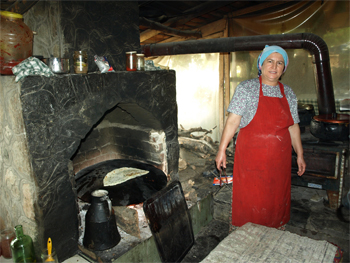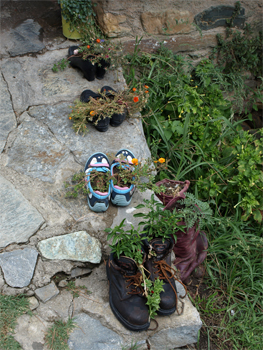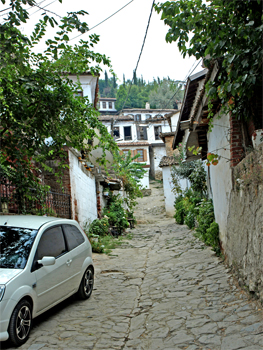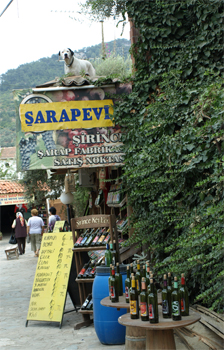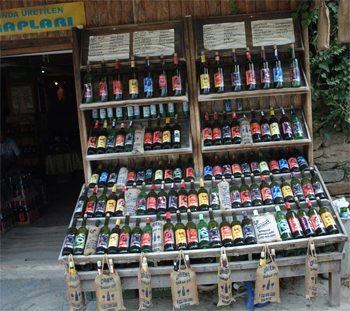Wednesday - 9/9 - Kusadasi - Ephesus
After breakfast at the hotel we rode the minibus to the ruins of Ephesus. We entered at the upper gate where the houses of the elite once stood in marbled elegance. (Put Ephesus into Google for more information than you want to know. A couple links: Ephesus 1; Ephesus 2; - there are lots more - use the back arrow key to return here.)
|
|
Baths |
Fountain of Pollio
|
Odeion (also called the Bouleuterion or Parliament) This seated about 450 politicos in 2 AD. The structure had a wooden roof so they could meet regardless of the weather and keep their conversations private.
|
Odeion - amphitheater and "stage" areas |
Interlocking construction for columns
|
Prytaneion or town hall - dedicated to the goddess of fire (Hephaestos) - if the men tending the altar fire let it go out, they were buried alive. The fire was maintained so the women could take a flame to light fires in their houses.
|
Caduceus
|
Monument of Memmius |
Monument of Memmius |
Relief of Nike - Goddess of Victory The relief of Nike with her wings and laurel wreath in her hand is a slab of marble that used to travel to towns at war to ensure their victory.
|
Temple of Domitian |
Temple of Domitian
|
Curetes street - looking up toward the area of the upper gate
|
Curetes street - looking down toward the Library of Celsus |
At the Gate of Heracles, we stepped down into the fancy agora, which housed merchants selling fine silks, spices, etc. The steps prevented the chariots from entering the upper city.
|
|
Gate of Heracles - with ubiquitous cat playing king of the column
|
Drawing of the Fountain of Trajan |
Ruins of the Fountain of Trajan |
Ruins of the Fountain of Trajan with Trajan's foot on the model of the world - they knew then that the world was round
|
Temple of Hadrian
|
Temple of Hadrian - relief of Medusa under the arch |
Temple of Hadrian - detail of arch |
Temple of Hadrian - detail of facade
|
|
Adnan demonstrating the use of the public latrine
|
Gale at the latrine
|
Library of Celsus - built to house the papyrus scrolls and later parchment books collected from and copied from travelers far and wide |
We were there - in front of the Library of Celsus
|
Sophia in a niche of the Library of Celsus |
Illustration of construction techniques posted in the Library of Celsus
|
Gate of Macaeus and Mithridates leading into the agora - the gate was dedicated to two freed slaves who became successful businessmen |
Latin inscription on the Gate of Macaeus and Mithridates - everything else is in Greek because the people of Ephesus spoke Greek even when ruled by the Romans |
Marble Street
|
Main Agora - for the common people
|
Main Agora |
Harbor street - which led down to the harbor where ships could load and unload and have access directly to the city
|
Ephesus theater - modern reconstruction (blue crane) and ancient ruins |
Ephesus theater - a 25,000 seat structure still in use for use for special events - it was the largest theater in Asia Minor -
|
Ephesus theater The Romans added the three-story stage. Pavarotti and the Sting have performed here. The orchestra area was flooded to stage naval battles in 4 AD. |
Ephesus theater - looking back from along Harbor Street
|
Sarcophagi |
Christian symbols used to identify Christian merchants
|
Christian symbols used to identify Christian merchants |
Excavation has been going on here for over 100 years, mainly by Austrians, but will probably never be completed because the city was so large. We made two tours of Ephesus (with OAT and Elderhostel) and learned much each time. It is so interesting to see and be able to walk amongst the ancient ruins and imagine what it must have been like in ancient times.
After the tour of Ephesus, we stopped for an OAT discovery at a leather factory and sat through a fashion show while drinking apple tea or raki, then listened to an explanation about the fine lamb and sheep leather and, of course, visited the showroom. The coats and jackets were beautiful but not practical for our life style - or pocketbook.
We rode to the old Rum village of Sirince for a fine lunch at Ocakbasi restaurant. We had stuffed pumpkin blossoms, a new chopped eggplant dish, sautéed marsh grass, stew and cheese and mushroom stuffed pancakes (tortillas) among other things. We watched a lady making the pancakes on a drum with a rolling stick and cooking them in an open wood fired oven. Dessert was figs and grapes picked on their farm this morning. Everything was delicious. We walked through the markets on the curvy, narrow stone streets. This village was resettled by Turks in the 1923 population exchange. They are mainly farmers and make a lot of fruity wines.
Peacock at the leather factory
|
Street scene - Sirince |
Overlooking the town of Sirince
|
Fields and orchards above Sirince |
The Ocakbasi Restaurant in Sirince
|
Making pancakes for our lunch |
A novel planter
|
Street scene - Sirince |
Wine shop
|
Wine products of Sirince |
Back at the hotel we had our “farewell” dinner with wine, starters, a chicken/fried potato/yogurt dish, and a dessert buffet. We said our goodbyes because most of the group will leave for the airport a 4 AM! We will leave at 10 AM. We have each others’ e-mails and addresses so we can stay in touch.
This was a wonderful tour. The Turkish people are friendly and hard working, the towns and cities are clean and safe. The Turkish food was delicious – especially the breads. We enjoyed the big cities, the ancient ruins, the small villages, and boating along the Aegean coast (Turkey’s Turquoise Coast). It was a great experience. If you haven't been and get the chance - Go to Turkey!!
| Return to Top | Return to Itinerary | Return to Dreamcatcher Home Page |

